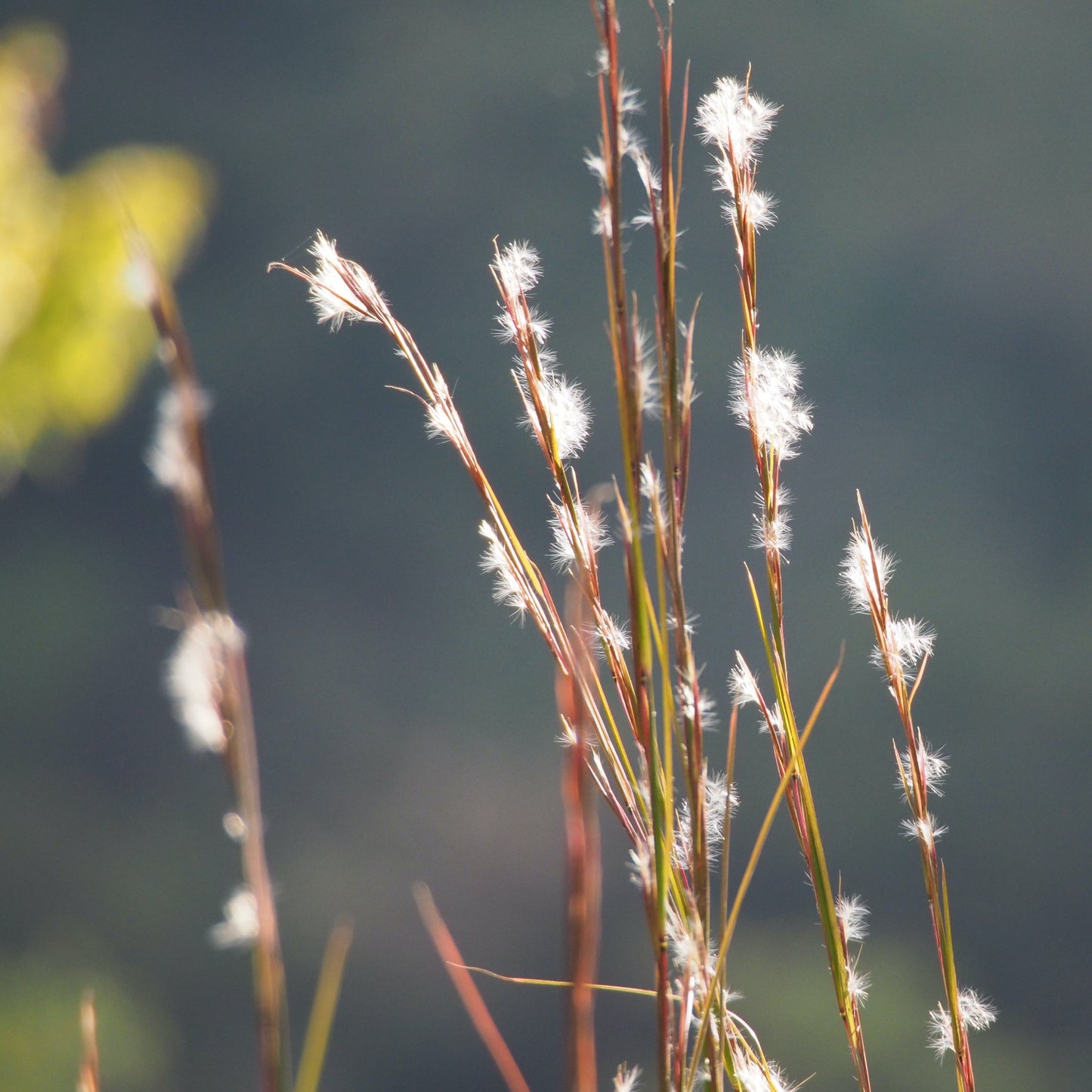Broom sedge
Andropogon virginicus
Andropogon virginicus
Couldn't load pickup availability
Sun/shade: Full sun
Soil moisture: Dry to medium
Height: 2-3'
Flowering period:
Deer resistance: High
Growing in waist-high bunches that turn a rich, reddish-tan at season’s end, broomsedge imparts a look of soft warmth to the meadow in autumn and winter. In natural situations, broomsedge rapidly colonizes bare soil through the dispersal of its abundant, wind-borne seed, and it is often quite prevalent in newly vegetated areas. After approximately 4-5 years, broomsedge abundance may decrease as more competitive species take hold. Broomsedge is best adapted to sunny areas of regular disturbance (e.g., mowing, grazing, fire, etc.) and dry, low-fertility soils, and under these conditions it may persist long-term.
In terms of wildlife value, broomsedge provides shelter to both birds and bees and offers food to the former. Overwintering female bumblebees seek out the cavities that form at the base of bunchgrass stems, and these spaces can also house bumblebee colonies. Grassland birds build their nests within bunchgrass tussocks, taking advantage of the concealment that the dense stems provide. Various birds (e.g., juncos and sparrows) are also known to forage for broomsedge seeds.
With its lovely fall coloration and usefulness to wildlife, broomsedge makes a worthy contribution to the home landscape, especially to dry, nutrient poor areas where little else will grow. Common associates of broomsedge that do well under these same adverse conditions include grey goldenrod and common milkweed. The three plants are often found growing in worn-out fields and along roads, bringing color and wildlife value to challenging growing environments.
Photo © Harum Koh, CC BY-SA 2.0.

